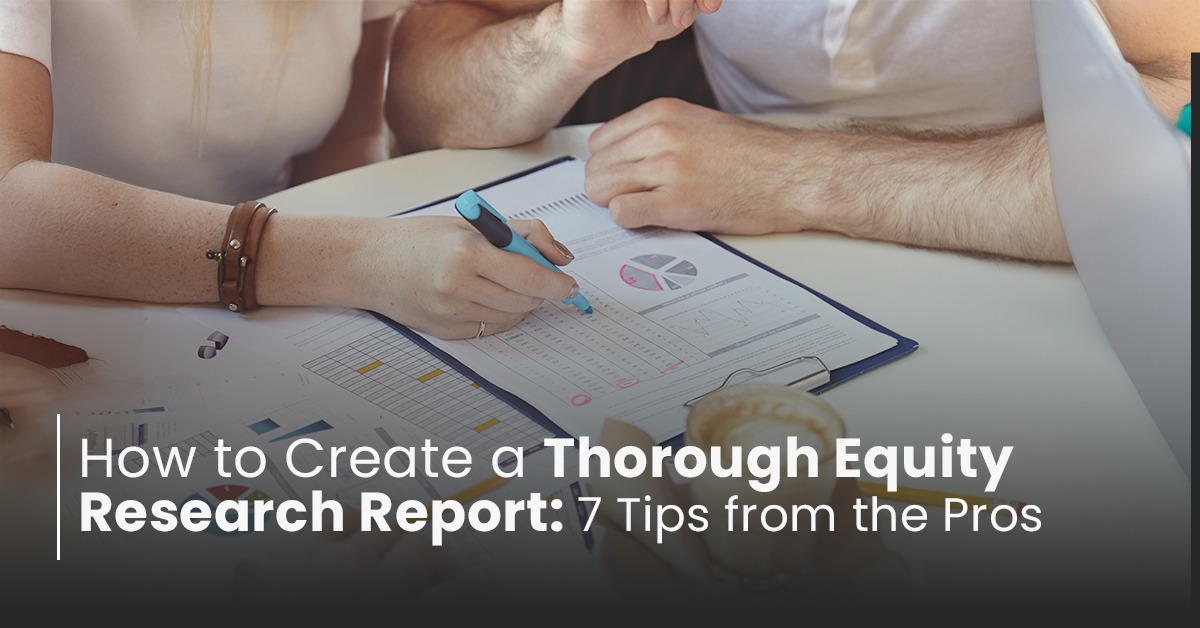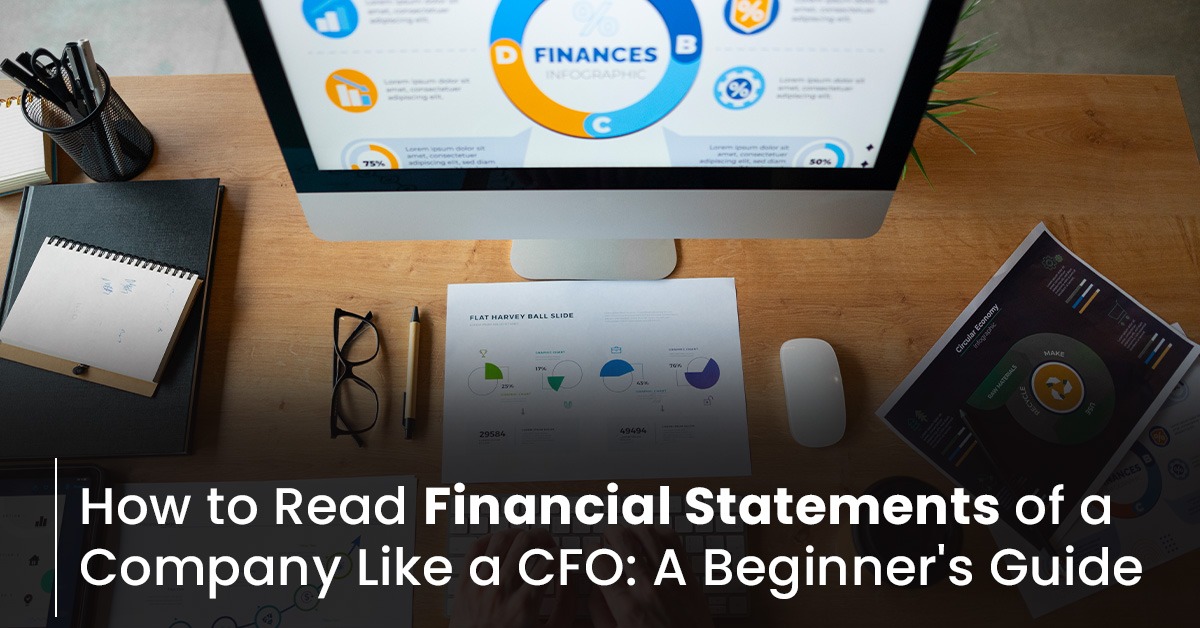Did you know that nearly 80% of retail investors base their investment decisions on incomplete or inaccurate research?
This can lead to costly mistakes in the market.
But what if you could unlock the secret to creating comprehensive, reliable equity research reports like the pros?
In this blog, we’ll walk you through key steps and tips that equity research analysts use to craft reports that provide valuable insights.
You’ll learn exactly:
Whether you’re an aspiring analyst or an experienced investor, this guide will help you approach equity research with confidence.
What does an Equity Research Analyst do?
An equity research analyst looks closely at companies and their stocks to help people make smart investment decisions.
They do a lot of research to understand how well a company is doing financially and whether its stock is a good buy, hold, or sell.
Here’s how they work:
1. Research the Company and Industry:
They start by gathering information about the company, like:
- What it does
- How it makes money
- How it performs compared to other companies in the same industry.
2. Look at the Company’s Finances:
They check the company’s financial statements (like income and balance sheets) to see:
- How much money it’s making
- How much debt it has
- How healthy its business is.
3. Determine the Stock’s Value:
They use different methods to figure out if the stock price is too high or too low compared to the company’s true worth.
4. Give Recommendations:
After all their research, they tell investors whether they should buy, sell, or hold the stock.
For example, let’s say an analyst is looking at a company called XYZ Corp.
They would study XYZ’s financial reports and see how the company is doing compared to others in its industry.
If they find that XYZ is doing well but the stock price is too high right now, they might recommend “hold” – meaning it’s better to wait and not buy or sell the stock yet.
This is what equity research analysts do.
They help investors decide the best course of action for their money based on thorough research and analysis.
7 Tips to Create a Thorough Equity Research Report
Creating a thorough equity research report is an essential skill if you’re aiming to make informed investment decisions.
Whether you’re an analyst or investor, your report should offer clear, valuable insights to help guide action.
Let’s begin.
1. Summary:
Start with a concise summary that gets straight to the point.
This section should summarize the key findings in the least amount of words, ensuring maximum value.
Focus on what matters most—your recommendation and why the report is worth reading.
Don’t overload the reader with unnecessary data; instead, offer a snapshot that sets the stage for the detailed analysis to follow.
2. Company Overview:
In this section, outline the company’s core information—what it does, its major brands, and recent performance.
Highlight its current outlook and position in the market.
You could add:
- The stock’s performance
- Is this a distressed opportunity that the company could turn around?
- Could this be a case where the company’s success is being overlooked by the market?
If the company is showing strong results but is being overlooked, or if it’s poised for a recovery, make sure to highlight why the reader should pay attention to this report.
Give them 2-3 key points that explain why this stock is worth considering—whether it’s undervalued or poised for significant growth.
3. Financial Health:
Assess the company’s financial health by reviewing key metrics such as:
- Revenue
- Profit margins
- Debt levels
- Cash flow.
Highlight recent earnings reports and any significant changes in financial performance.
Use visual aids like charts and graphs to make this information more digestible.
This section helps investors understand if the company is financially stable and what trends are emerging from its past performance.
4. Stock Valuation:
Next, perform a stock valuation to determine whether the stock is fairly priced.
Use valuation techniques like:
- The price-to-earnings (P/E) ratio
- Discounted cash flow (DCF)
- Comparable company analysis.
Compare these metrics to industry benchmarks to assess whether the stock is overvalued, undervalued, or priced just right.
Provide clear insights into why the stock’s current price may or may not reflect its true value.
5. Risk Factors:
Every investment carries risks, and it’s crucial to identify them upfront.
Discuss any potential risks the company might face—whether from:
- Market shifts
- Regulatory challenges
- Competition
- Operational issues.
This helps investors weigh the potential rewards against the risks, giving them a balanced view of the opportunity.
Acknowledge any uncertainties that could impact the stock’s future performance.
6. Future growth potential:
Evaluate the company’s growth potential by analyzing its:
- Strategic plans
- Market trends
- Future opportunities.
Highlight any initiatives or innovations that could fuel growth—such as:
- New product launches
- Entry into new markets
- Expanding customer bases.
Also, examine industry trends and macroeconomic factors that could impact the company’s performance in the coming years.
Provide clear projections for how the company could perform in the future.
7. Clear Recommendation:
Conclude with a clear investment recommendation—whether it’s to buy, sell, or hold the stock.
Support this recommendation with the evidence you’ve presented throughout the report.
Be direct and transparent about your conclusion.
Explain why investors should take action based on your analysis.
Make sure your recommendation aligns with:
- Your valuation
- Financial analysis
- Growth prospects.
By following these 7 tips, you’ll be able to create a comprehensive and insightful equity research report that helps investors make confident, informed decisions based on well-rounded analysis and data.
Equity Research Report Format:
Here’s a standard Equity Research Report Format you can use as a guide for creating professional and structured reports:
1. Title Page:
Have a title page in your equity research report.
2. Executive Summary:
A brief overview of the key findings of the report, including the investment recommendation (buy, sell, or hold) and the target price for the stock.
Keep it concise but informative.
3. Company Overview:
This summarizes the company’s:
- Core business
- Key products or services
- Market position, along with its major brands or subsidiaries.
It also provides context on the industry and market environment, followed by a brief overview of recent financial performance, earnings, and significant events.
4. Investment Thesis:
In this section you have to add, a clear explanation of why you recommend buying, selling, or holding the stock, along with the key drivers.
5. Financial Analysis:
Financial Analysis covers key metrics from the income statement, such as revenue, gross profit, operating income, and net income.
6. Valuation:
In the Valuation section, use methods like P/E ratio, discounted cash flow (DCF), and comparables to assess the stock’s intrinsic value.
Provide a target price based on your analysis and include sensitivity analysis to show how changes in assumptions impact the target price.
7. Risks and Challenges:
In Risks and Challenges, highlight company-specific risks, such as operational or financial issues, as well as industry risks like:
- Competition,
- Regulation
- Market trends.
Don’t forget to address external risks like geopolitical or economic factors.
8. Growth Prospects and Strategic Initiative:
For Growth Prospects and Strategic Initiatives, focus on growth drivers like:
- New products
- Geographic expansion
- Acquisitions.
Include management’s strategic initiatives and market trends that may affect future performance.
9. Competitor Analysis:
This compares the company to its main competitors in terms of market share, growth potential, profitability, and financial health and shows its position in the industry
10. Investment Recommendation:
In the Investment Recommendation, clearly state whether to buy, sell, or hold, and justify your recommendation based on financial analysis, risks, and growth potential.
Include a target price for the stock within the next 6 to 12 months.
11. Conclusion:
Lastly, the Conclusion recaps the key points and reaffirms your investment thesis and recommendation.
Optionally, include Appendices with detailed financial statements or additional charts, and a glossary of key financial terms if necessary.
This format ensures your equity research report is structured, comprehensive, and easy to understand while providing all the key details investors need to make informed decisions.
Conclusion
Creating a thorough equity research report is more than just analyzing numbers—it’s about providing clear, actionable insights that can guide investment decisions.
By following the steps outlined in this guide, you’ll be well-equipped to craft reports that offer valuable information for investors.
From understanding what an equity research analyst does to mastering the essential components of a comprehensive report, you can produce reports that are both insightful and impactful.
Remember, the goal is to present data and analysis in a way that helps investors make informed decisions with confidence.
So, whether you’re aiming to improve your investment strategy or develop your skills as an equity research analyst, these tips will help you create detailed, reliable reports that stand out in the market.
By mastering the equity research report format and leveraging the right tools and techniques, you can unlock the power of data to make smarter investment choices.
Start building your expertise today and make equity research an invaluable part of your investment journey.
Check out an example of equity research report to see how these components come together in a practical, real-world scenario.



